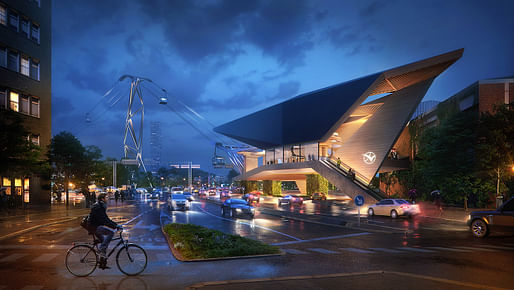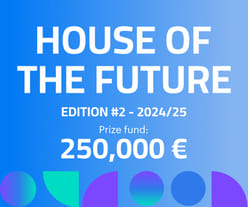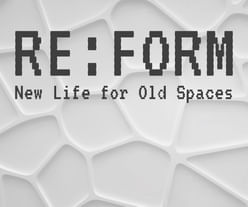
The City of Gothenburg recently selected UNStudio to design their new cable car system, winning over proposals by BIG, WilkinsonEyre, and White Arkitekter with Diller Scofidio + Renfro. The new public transit system is one of the numerous projects being built in commemoration of Gothenburg's 400th anniversary in 2021.
UNStudio's proposal includes one cable car line with four stations and six towers. Once built, it'll be Sweden's first new mode of public aerial transit since the subway was introduced in Stockholm in the 1930s.

“A cable car system can not only provide much needed sustainable transport between otherwise disconnected parts of our growing cities, but by travelling ‘as the crow flies’ and bypassing traffic congestion on the ground, it can ensure extremely fast, reliable and efficient travel for both residents and visitors alike,” said Ben van Berkel of UNStudio in a statement. “Although primarily a pragmatic solution, cable cars are also a very congenial way to travel as they enable us to see and experience our cities in a whole new way.”

At 3 kilometers long, the cable car line starts at Järntorget, where it links to a bus and tram transfer node. The line then crosses the river and continues to three more stations in Lindholmen, Västra Ramberget, and Wieselgrensplatsen.
The design of the cable car towers, which will be built at various heights, references the asymmetrical forms and steady motions of Gothenburg's shipyard cranes, a nod to the industrial city's history. The towers will be made of pre-fabricated fiber and reinforced spun concrete. At night, the towers will be illuminated by spotlights that line the inside of the tower beam surface.

The stations will be designed with distinct geometric forms to make them recognizable destination points in the city, featuring faceted roofs, geometric ceilings clad in wood, and boarding platforms flooded in natural daylight.
For the large structural elements underneath the stations, UNStudio plans to clad them with an “innovative moss culture” that removes fine dust, nitrogen dioxide, and ozone gases from the air and reduces the urban heat island effect via evaporation. The stations will generate their own energy through PVT panels that will be integrated within the roof structures to provide electricity and lighting and thermal energy to heat the floors and stairs.
Find more project drawings in the gallery below.
Project credits
Architect: UNStudio (Ben van Berkel with Arjan Dingsté and Juergen Heinzel, Ayax Abreu Garcia, Xinyu Wang)
Local Architect: Kjellgren Kaminsky Architecture AB
Client: The City of Gothenburg - Traffic and Public Transport Authority (TRAFIKKONTORET) in collaboration with: The City Planning Authority (Stadsbyggnadskontoret) Västtrafik AB, The Architects Sweden
Advisors:
Structure & Engineering: Knippers Helbig
Lighting Design: Licht&Soehne
Visualizations (CGI): Plompmozes
All images courtesy of UNStudio.

The Architect's Chair / Edition #3
Register by Wed, Jan 15, 2025
Submit by Tue, Feb 18, 2025

250,000 € Prize / HOUSE OF THE FUTURE 2024/25
Register by Wed, Apr 30, 2025
Submit by Mon, Jun 2, 2025

Re:Form – New Life for Old Spaces
Register by Wed, Jan 22, 2025
Submit by Tue, Sep 2, 2025

Museum of Emotions / Edition #6
Register by Thu, Jan 23, 2025
Submit by Tue, Apr 29, 2025
1 Comment
trying to give civil engineers heart attacks?